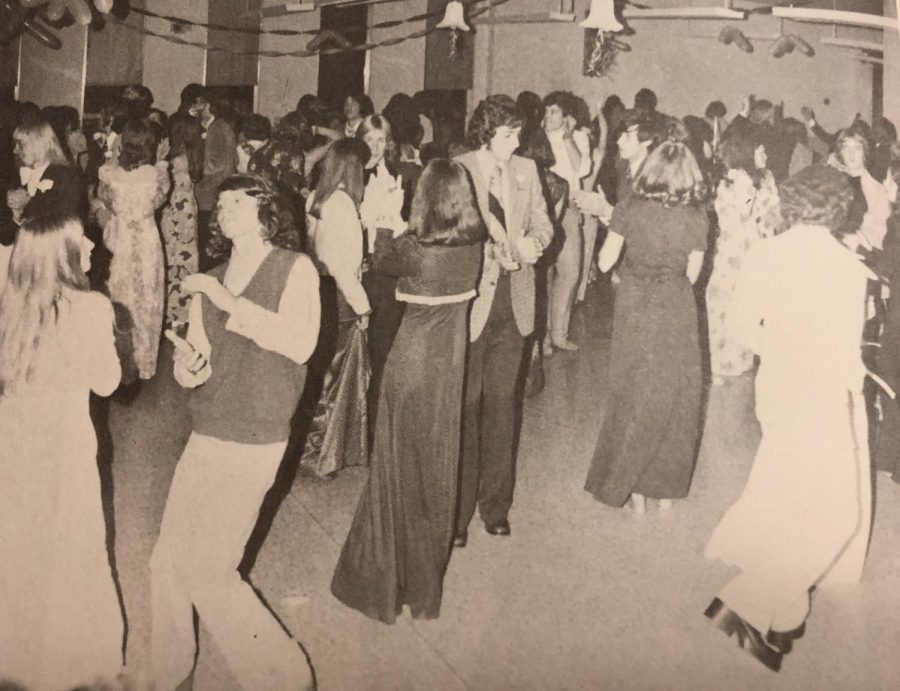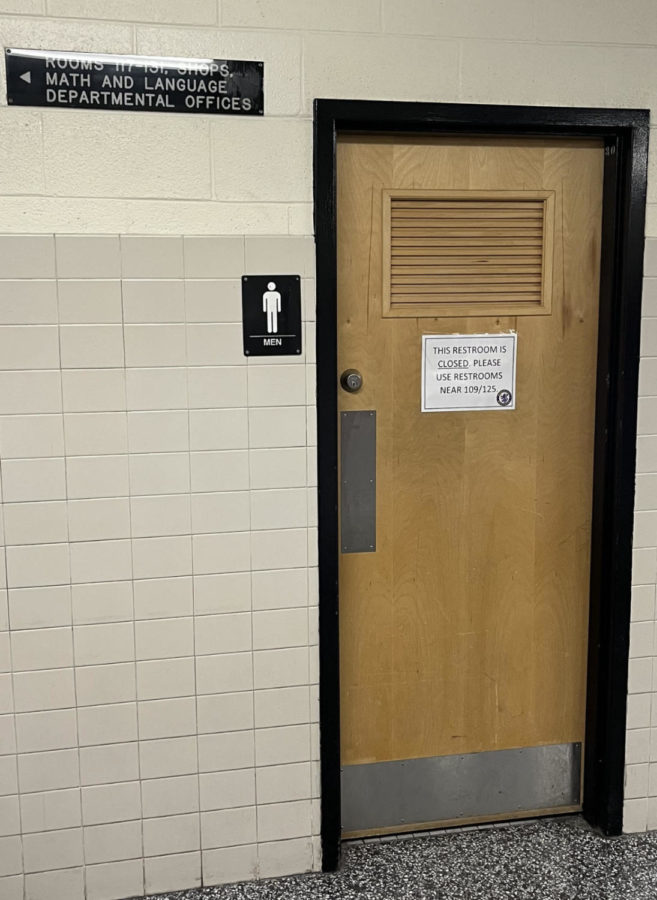The Harmful Cell Phone Addiction
Sophomore Kayla Borczynski uses her phone during class.
Technology is always changing and advancing. The introduction of mobile cell phones has made many aspects of life easier, such as contacting friends and family, retaining information with the use of the internet, and watching many sources of entertainment.
However, the popularity and widespread use of cell phones by millennials and Generation Z points toward the idea that they have become somewhat of an addiction. Everywhere you look, you see at least one person on a cell phone. It is unusual for individuals to not have a cell phone today. In fact, cell phones, particularly smartphones, are extremely common among teenagers in high school.
Smartphones have become essential tools for high school students. Many students are preparing for college and need ways to get in contact with extracurriculars and other activities. They are also essential sources of entertainment, and students use them for social media, watching movies, and listening to music. Unfortunately, students often use their phones during inappropriate times, such as in class at school.
It is hard enough for teachers to teach a room full of teenagers information about subjects that many of them don’t enjoy, but the addition of smartphone use in the classroom makes their job even more difficult. Students text and use their phones during lectures and assignments, leading them to avoid paying attention during class, and then not knowing the material for tests later on. This is extremely frustrating to teachers, who are just trying to do their jobs and help their students pass the class.
“I feel like it [students using cell phones in class] is a large distraction, and I feel like there needs to be a better solution to help. I don’t think they should be used in school. It does [make my job more difficult] because they [phones] are so personal to students, and I think that students get very personally offended when you ask them to put phones away, and it does make the job more difficult because it creates more discipline issues,” admitted Spanish teacher Katie Garner.
The increased use of smartphones is also pulling the attention of teenagers away from reality. The need to look at a phone screen at all times keeps people from enjoying things in the moment and paying attention to the world around them. Instead of taking a day to go outside or hang out with friends and family, many teens stay indoors to stare at their phones. If they do go outside, they are still on their phones instead of paying attention to their surroundings. Nature and the beauties of the earth often go unnoticed by teenagers who are more focused on what’s on their screens than what’s in front of them.
Recent articles suggest that this constant interaction with our cell phones is a real addiction. According to an article in the New York Times written by Catherine Price, “many experts believe that we are developing behavioral addictions to our phones.” The article states that smartphones and popular apps “trigger the release of dopamine, a brain chemical that helps us to form habits- and addictions.” Many teachers who witness students on their phones during the day agree with this. “I do think so [that students have developed an addiction to cell phones]. Not all students, not all teenagers, but a large majority of them do, and I think it has to do with what they’re taught at home and the habits of their parents. Some students you can tell have learned healthy habits, and with other students I feel like it is starting to become an addiction,” stated Garner.
A common key factor increasing the addiction of smartphones is the introduction of new social media platforms, like Instagram, Twitter, and Snapchat, that occupy the free time of most teenagers. Whether people are posting pictures and commenting on posts from friends, viewing popular posts, messaging friends, or reading tweets, social media use has skyrocketed in popularity and caused people to become more addicted to their smartphones.
Another reason for smartphone addiction in high school students is the constant release of popular music. Current popular songs such as “Old Town Road” by Lil Nas X featuring Billy Ray Cyrus, and “Bad Guy” by Billie Eilish keep teenagers always wanting to listen to music. Menchville staff and teachers repeatedly tell students to put away their earbuds during class and in the hallways, but students are often seen with them in their ears despite the warning. When asked about her reasoning behind listening to music during class, Sophomore Lauren Bueter said, “I choose to listen to music throughout classes and walking the hallways- despite knowing that teachers are going to tell me to stop listening to music- because it helps me calm down when I start hearing everyone talking or when I get an assignment. I can focus on it solely and not go on little tangents in my mind, it keeps me focused. It [music] gives me something to focus on when there is nothing else to focus on, or when there’s too much to focus on. I feel like it doesn’t necessarily help it [learning] or impede it. It helps to calm me down when there’s a lot happening or a lot of people talking, and when it [the music] starts to impede my learning process or my ability to learn the information I, personally, stop.”
However, many teachers and Menchville staff feel like using a cell phone to listen to music during classes only causes them to become more distracted in class. “My class is a communications class where we’re learning a new language, and one of the most important parts of my class is communication: listening to people talk, and also talking to other people. It’s very hard to participate in a language class if you’re listening to music. It’s very hard to communicate with another person completely, or presently, if you’re listening to music at the same time. So, I feel like maybe [it’s ok] in other classes, at times, but not all the time. Sometimes teachers will play music on the stereo for students. There’s definitely a benefit to music, but I don’t think that everyone needs to have their own individual music on at one time,” stated Garner.
This smartphone addiction is not only inconvenient, but extremely harmful to our generation. Many studies have stated that smartphone use has been a contributing factor in depression and suicide rates among teens. In an article published in the Daily Press, San Diego State University psychology professor Jean Twenge said that “the increase in mental health problems comes amid the meteoric rise of smartphone ownership and young users’ early and ardent embrace of social media.” In other words, as ownership of smartphones and use of social media has risen, so have many mental health problems among teens. Teens also experience increasing loss of sleep due to the use of cell phones. According to a study conducted by Dr. Gregory Marcus that was later published on CNN, the use of smartphones, especially near bedtime, is associated with sleep deprivation and worse quality of sleep. Cyberbullying and other dangerous online issues have also increased with the growth of cell phone use.
In order to protect the health and happiness of our generation, we need to lessen this addiction. Increased smartphone use is causing performance in school to drop, and it is damaging the health of teens, decreasing the overall happiness of our generation. Our world is constantly changing, so we need to change the way that teenagers in our generation rely on their phones. The next time you want to pick up your phone, take a minute and appreciate the world around you instead.

Committed to graduate in 2021, Beth Ellis is a fourth year staff writer for The Lion's Roar. She has always had a passion for writing and taking photos,...






























































































































































